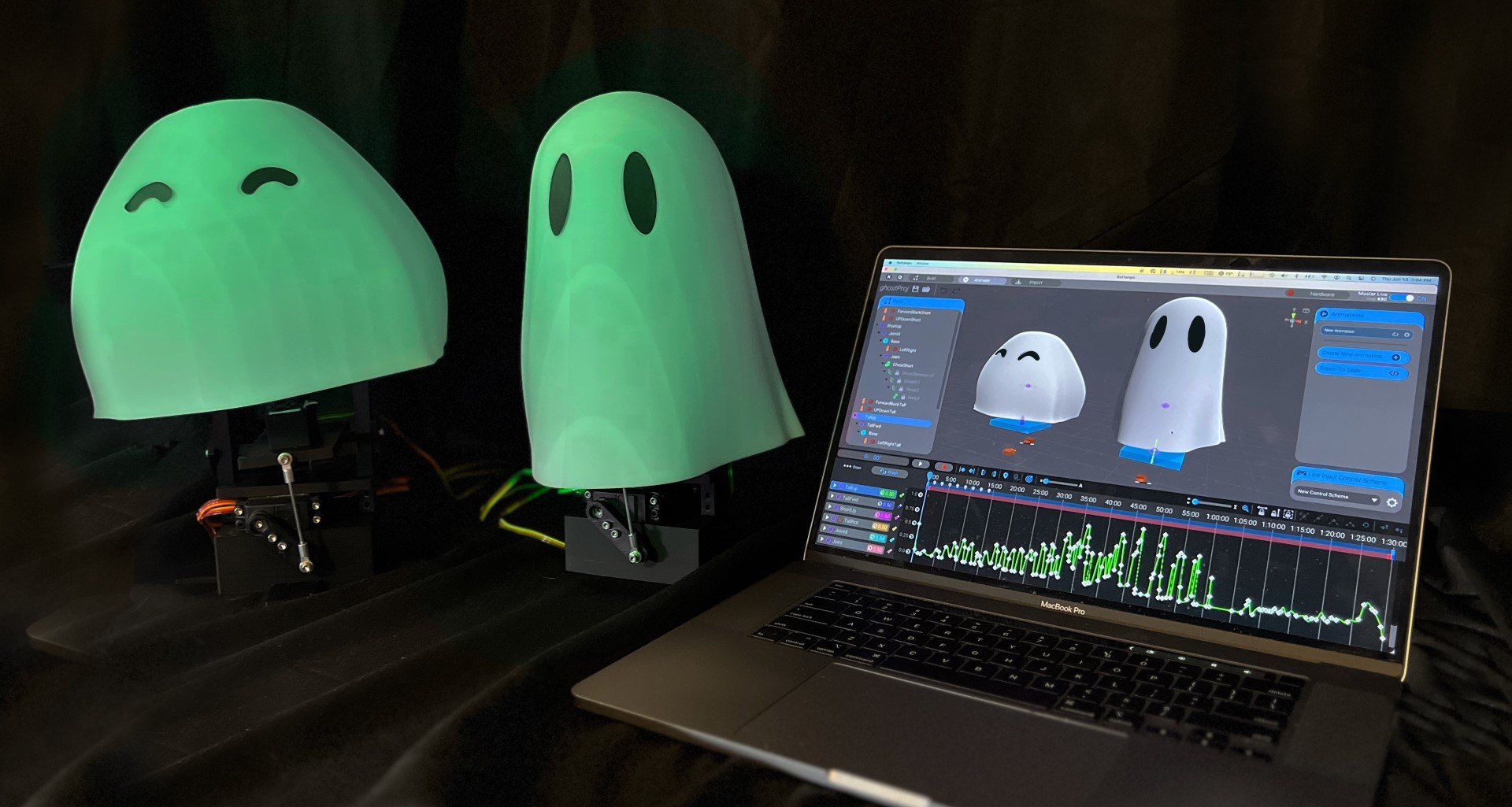
Starting to learn animatronics as an art form can be really intimidating. Programming, mechatronic design, electrical engineering … the list of required skills goes on and on. And to be honest, I think that’s no fun! Animatronics should be an art form available to everyone.
To make animatronics more accessible, I’ve been developing Bottango for over five years. Bottango is free animatronic animation software that’s been used for years by beginners on up to industry professionals to create dynamic animatronic performances.
In Bottango, you use industry-standard animation workflows for animating digital characters, like you would in 3D movies and games, and apply those techniques to real-world animatronics. Instead of creating animations in hard-to-visualize code, you use keyframes along a timeline to make movements of a 3D simulation of your robotic invention. You can get as fine tuned as editing the interpolation of movements using an industry-standard animation graph editor, or even do live recording of puppeteering on a gamepad which automatically converts to editable keyframes.
Bottango works on any Arduino-compatible microcontroller and easily produces lifelike and creative movements of your own robot designs, using open source hardware you probably already have in your closet.
To make something fun and simple for Halloween, I was inspired by Louie Zong’s viral Ghost Choir video (below).
Once you finish building these characters and mechanisms, you’ll use a premade Bottango project and animation to perform the Ghost Choir song right out the gate. Big thanks to Louie Zong for giving permission to use his song for this build. You can see a video of the final result below.
And after it’s all built, you can then use Bottango to bring in your own audio and create your own animations for the characters.
Designed To Be Easy
For this project, I wanted to design a simple animatronic that anyone new to the art form could put together. Each ghost can float up and down, look/bend up and down, and look/turn left and right (Figure A). Though the characters and mechanisms are simple, by using powerful animation tools, you can get a lot of emotionality in the animatronic performance.

In order to keep this build easy, the design has some drawbacks. I wanted it to be entirely 3D printed, without hard-to-source hardware like bearings, and take under an hour to assemble. With those considerations, understand that the movement will be a bit shaky and noisy, as the plastic reverberates from the servos and doesn’t have additional hardware to “shore it up.” Better quality and quieter servos can help and, as with all animatronics, you will cover up some of the noise with your own soundtrack playing over speakers.
Build Your Singing Animatronic Ghosts
You can get the 3D model files for printing, recommendations of specific materials and hardware, and more details for this build at the project page. If you’d like to discuss the build and learn more about using Bottango, join the Bottango Discord server.



